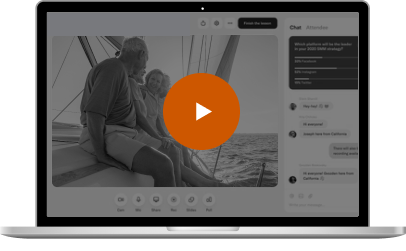Nontraditional financial planning model allows you to pay for the expenses you incur between now and retirement — the middle of your life — without losing the ability to build wealth.
According to popular opinion(opens in new tab), sound financial planning advice consists of two main steps: save for emergencies and save for retirement. After 30 years in the financial services business, I have found this to be misleading. It’s a phenomenon I call “the Missing Middle.”
Just think about how life tends to happen for many people: You get a job and an apartment. You find someone you want to spend the rest of your life with and get married. You start a family. You buy a house. Then…
You need furniture.
You take out loans for cars.
You buy the new iPhone, replace the water heater and cut the check for tuition.
You pay the minimum on your student loans and hold a small balance on a credit card.
While having this idea in the back of your mind that you must have six months of income in a savings account and you should contribute the maximum to your 401(k).
Before you know it, you have thousands of dollars in savings AND thousands of dollars in debt. And, according to traditional financial advice, you’re right on track.
The Traditional Financial Planning Model
From my experience, the internet, your parents and financial planners alike have all drilled this two-part financial planning model into our heads. In fact, the assumption that saving money in a bank and then focusing on retirement is the way to financial security and independence is so deeply ingrained in all of us that anything else may seem radical and beyond consideration.
But this assumption, like so many widely accepted credos, deserves to be questioned. They are not often evaluated against a meaningful benchmark. Rather, they are measured according to generic, “universal” truths:
- Why is having three to six months of income the “right” amount of emergency savings? And what is considered an emergency? Is it a health crisis, a home burning down, a job loss? Won’t insurance cover those things many of these things?
- Furthermore, when is this emergency going to happen? What is the advantage to sitting on these massive amounts of money in a no-growth account until you might need it?
- Why do you need 10 times your income in life insurance? Who came up with that arbitrary number, and will that actually be enough?
The real benchmark(s) should be based on your personal needs, goals and financial situation. Allocating money toward future, big-ticket purchases on a monthly basis will allow you to anticipate those needs in “the middle” and find a way to pay for them while building wealth.
Sure, the basic idea behind this strategy is logical: Investing early can compound growth.
But it also kills your cash flow. When you’re borrowing money to fund “the middle,” you’re directing more of your cash flow to bank payment because your money is tied up in a retirement account that you can’t use.
When you think chronologically about all the big-ticket items that you’re going to need (or want) to spend your money on, the list is long: cars, home improvements and repairs, medical expenses, your kids’ college tuition, family vacations…
Unfortunately, many people don’t account for these expenses in their cash flow. So, one of two things happens:
- You continually deplete your savings in order to pay for things in cash. As a result, you are constantly funneling money back into your bank account to replenish your emergency fund.
- You finance everything with bank loans and credit. Then you work to pay those things off.
Either way, it’s a zero-sum game.
There are a lot of expenses between now and retirement that most people are ignoring. To make matters worse, many of these people are handing their money off to the bank and/or socking it away in a retirement account, potentially reducing their ability to grow their wealth in both the short and long term.
For instance, when you store money in a bank account, you earn little or no interest, and what you do earn is taxed. Then when you use the money you have stored for a purchase, the money is gone forever. You’ve missed out on potential earnings while the money is being stored, and then you give up future earnings on the money you spent.
And if you are investing in your company 401(k), you are effectively relinquishing control of your money. You are not fully in charge of your investment selection or fully diversifying your risk. You also give up access to your money until you are of retirement age, unless you want to pay a penalty or take a loan.
The Life Cycle Financial Planning Model
Wouldn’t it be more practical to model your financial plan around the inevitable expenses you will incur as you live your life? What if you created a system that allowed you to pay for the expenses you will incur between now and retirement — the middle of your life — without losing the ability to build wealth?
If you think chronologically, most young people should not be saving for retirement. Rather, they should prioritize their shorter-term needs and wants, from paying down student loans to paying for life’s inevitabilities, before basically anything else.
That’s the point of the Life Cycle Model, in which individuals allocate resources over their lifetimes with the aim of avoiding sharp changes in their standard of living while avoiding debt and building wealth.
Of course, this type of system requires a significant mindset shift when it comes to how you store and save your money. In other words, going against the popular opinion of funneling all of your cash into a traditional bank or retirement account and modeling your strategy around your financial life cycle.
One method to pay for all the big-ticket items is privatized banking, or what we call BUILD Banking, where you use a specially designed whole life insurance policy (in lieu of a bank) as both a repository for your savings and a funding source for large purchases. This concept is commonly referred to as “infinite banking.”
Does that sound radical to you?
Life Insurance Is One of the Most Misunderstood Financial Products
This type of “banking” is not mainstream but is becoming more recognized as a viable method for supporting the life cycle model. The challenge for some people is that life insurance is one of the most misunderstood and misused financial products out there.
As far as I can tell, it’s because people compare whole life insurance to other financial services products, like traditional, off-the-shelf life insurance and the stock market or other investments.
Commonly, when life insurance is sold by salespeople as an off-the-shelf solution, a large portion of the money the client pays for the first year goes to the insurance company as compensation. As a result, a lot of these generic policies won’t show much gain for the first 10, 15 or more years.
A specially designed whole life insurance policy is different and uses a design that reduces the costs of the contract and accelerates the buildup of capital. These policies can be paid for and owned because after you’ve completed the capitalization period of the policy, you never have to make another payment. The insurance company backs guarantees of the death benefit, and no internal cost is removed from the cash value. All other forms of life insurance have a perpetual cost that increases over time. That can lead to not having enough funds in the policies or even forfeiture of the policy altogether.
Additionally, our BUILD Banking design has a much higher cash value in the first year. That’s because we adjust our compensation to allow more cash to be available to the client sooner. BUILD Banking doesn’t work unless you have that access.
So, it’s easy to see why you shouldn’t compare BUILD Banking designs to other forms of life insurance. But what about the stock market?
Put simply, comparing BUILD Banking to the stock market is like comparing apples to oranges.
Sure, the stock market could possibly provide a better rate of return, but it could also lose money, which doesn’t make it a safe place to store cash. BUILD Banking is not an investment strategy. We aren’t talking about competing with the market. We are talking about giving your money a place to grow while allowing access to cash without interrupting the growth of your money.
And when you compare a specially designed whole life insurance policy to a traditional bank account, you quickly realize that storing money at near-zero rates doesn’t seem to make good financial sense.
Traditional Banking vs. BUILD Banking
One of the main potential advantages of BUILD Banking over traditional banking is that it allows you to capitalize on money you are going to spend anyway. That’s because, when you take money from your bank account, that money is no longer available to earn interest. However, when you borrow money from your BUILD Banking policy, the entire amount remains in the policy.
Let me give you an example:
Let’s say you have $10,000 in a bank account and need to withdraw $4,000 to cover a home repair. The amount of money remaining in the account and earning interest is $6,000.
With $10,000 in a BUILD Banking policy, you would access the $4,000 in the form of a loan from the insurance company. Therefore, the policy acts as if the money was never removed, and the amount of money remaining in the account earning dividends is still $10,000.
But what about interest?
Yes, there are interest charges on these loans. However, because your money remains in the policy and continues to grow, you potentially recapture the cost of the loan.
Say your $10,000 cash value in your policy earns 4%, and you borrow $4,000 at 5% from the insurance company. The cash value earns $400, while the interest on your loan is $200. The earnings on your cash value recaptured the loan interest. ($400 earned – $200 paid = $200 net)
Again, there is a mindset shift that has to take place here. Historically, when it comes to the small percentage of our money we earmark for savings, we look for the cheapest option with no fees and the highest rate of return. However, when spending money on, say, a new car, people don’t mind paying fees or interest because they get what they want and/or need. That doesn’t make sense.
In short, people separate their money into two buckets: savings and spending. But it is entirely possible to carve out a bigger portion of your cash flow for wealth creation, if you are just willing to think a little differently. This is the opportunity in “the middle” that so many people miss.
In the end, even if you don’t change a thing about the way you are saving and spending your money, it’s worth a closer look. Otherwise, you might not realize what you’re doing isn’t working as well as it could or should until it’s too late.
Of course, working with a seasoned financial professional who understands how to build a custom product that will work for you is critical. (Just because someone offers it doesn’t mean they understand it!) Like a concierge, the right financial professionals will listen more than they talk. They will get to know you and familiarize themselves with your goals and desires. Then they will use the information you provide to guide you to where you want to be.
You can learn more about this at BUILDBanking.com.





